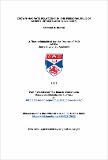Files in this item
Crown-magnate relations in the personal rule of James I of Scotland (1424-1437)
Item metadata
| dc.contributor.advisor | Macdougall, Norman | |
| dc.contributor.author | Brown, Michael Hunter | |
| dc.coverage.spatial | 629 | en_US |
| dc.date.accessioned | 2012-06-04T11:36:25Z | |
| dc.date.available | 2012-06-04T11:36:25Z | |
| dc.date.issued | 1992 | |
| dc.identifier.uri | https://hdl.handle.net/10023/2622 | |
| dc.description.abstract | This thesis is a study of the relations between James I and his most important landed subjects during the thirteen years of his personal reign. The King's active and aggressive approach to monarchy contrasted with the political experiences of the Scottish nobility in the fifty years before 1424. The analysis of this attempt to impose strong kingship in a situation where strong kingship had not been the norm is the most important theme of the thesis. Such an analysis can only be undertaken by establishing the ambitions and activities of the King and his chief subjects at both national and local levels. The first chapter deals with the political community in 1423-4 and the evidence of their preparations for James', release from England. The immediate effects of James' return are studied in detail, especially his relations with the Earls of Mar, Douglas, Atholl, March and Angus in the first year of the reign. However, the main emphasis of the opening chapters is on the King's dealings with the Albany Stewarts, beginning with the piecemeal round-up of Walter Stewart and his allies and then the gradual establishment of sufficient support for James to launch a general attack on Albany and his family. Chapter Four deals with the results of Albany's removal for James' position within Scotland. The expansion of royal authority is considered in the ex-Albany Stewart lands and with regard to James' relations with the major surviving magnates, Douglas, Mar and Atholl. The varied fortunes of these three earls indicate the extent and limitations of the King's authority following his initial successes. This is also an important theme in the chapters dealing with the middle section of the reign between 1428 and 1431. This period is dominated by the attack on the Lord of the Isles and the effects of the King's ambitions in the north on the lowland political community. The apparent successes of James in both areas, and the connection between the collapse of his northern plans and the growing difficulties in his relations with the political community are analysed. The effect of the setback which James experienced in 1431, on royal policy is studied by considering the King's aims in the 1430s, and especially his interventions in Mar and March. The final chapter deals with the motives for James' assassination and the circumstances and immediate aftermath of the murder. As with the rest of the reign, this is best understood in terms of magnate affinities and ambitions and the areas in which such ambitions came into conflict with those of the King. | en_US |
| dc.language.iso | en | en_US |
| dc.publisher | University of St Andrews | |
| dc.subject.lcc | DA783.6B8 | |
| dc.subject.lcsh | James I, King of Scotland, 1394-1437 | en_US |
| dc.title | Crown-magnate relations in the personal rule of James I of Scotland (1424-1437) | en_US |
| dc.type | Thesis | en_US |
| dc.type.qualificationlevel | Doctoral | en_US |
| dc.type.qualificationname | PhD Doctor of Philosophy | en_US |
| dc.publisher.institution | The University of St Andrews | en_US |
This item appears in the following Collection(s)
Items in the St Andrews Research Repository are protected by copyright, with all rights reserved, unless otherwise indicated.

